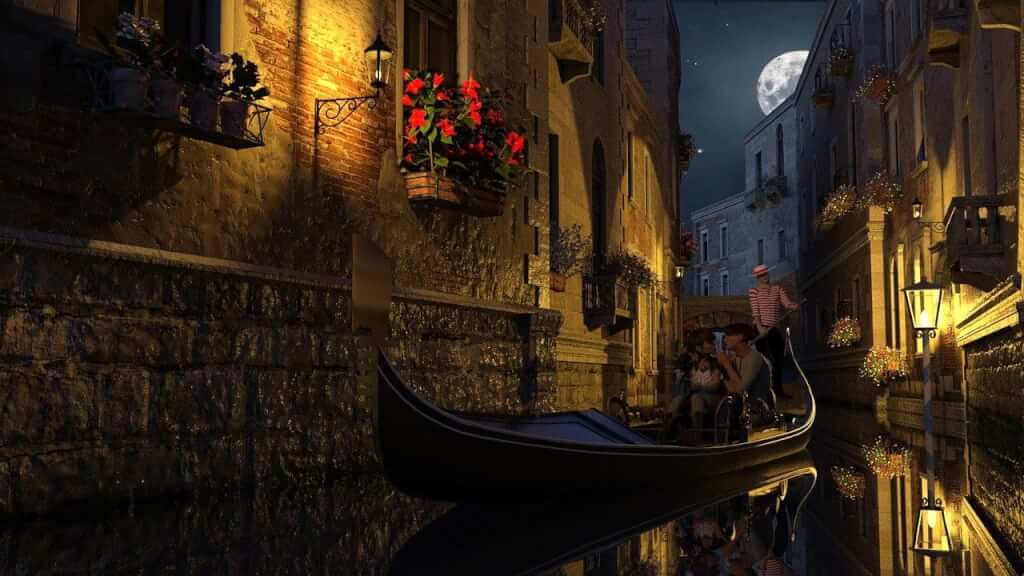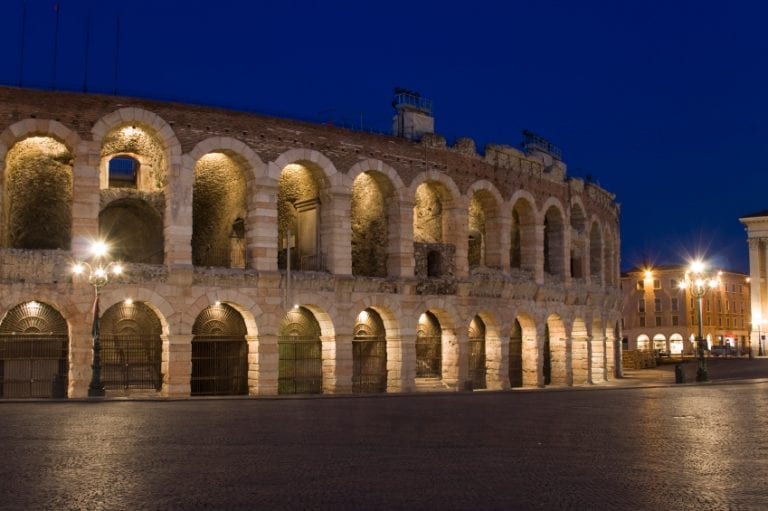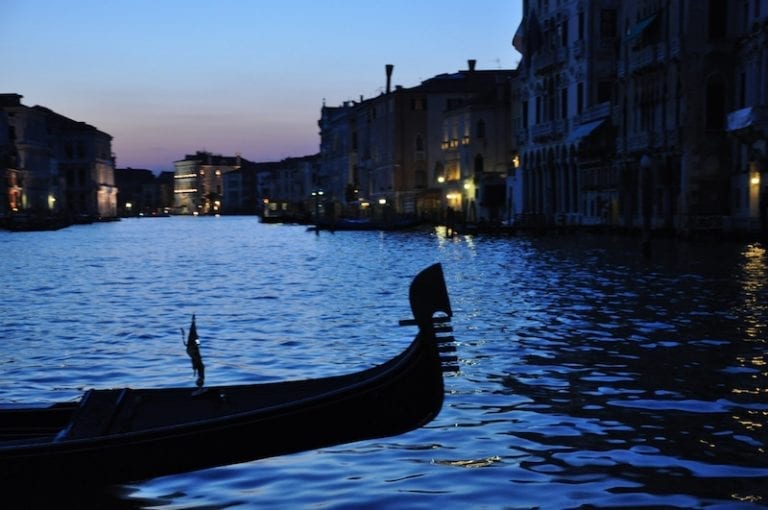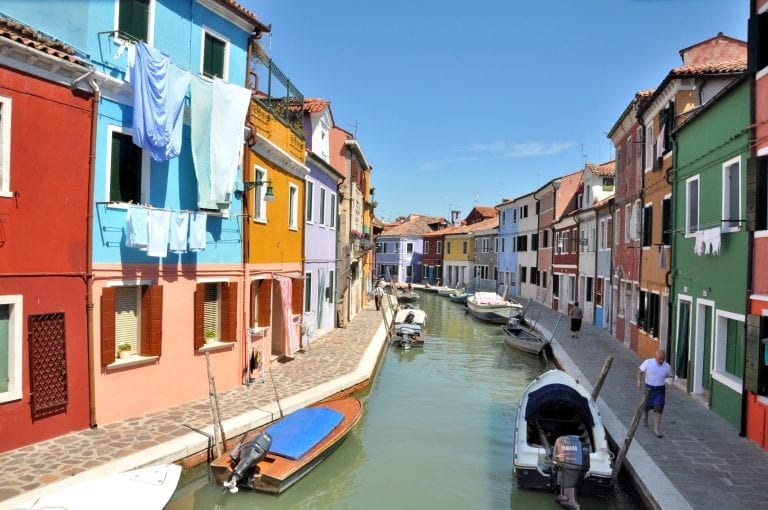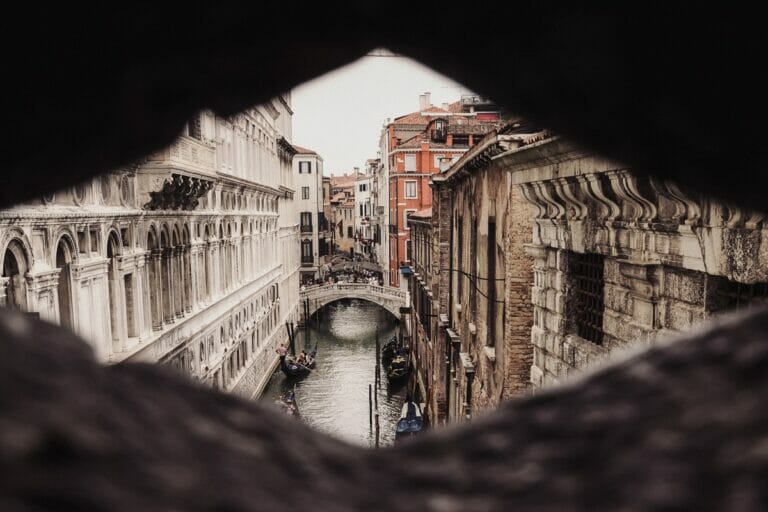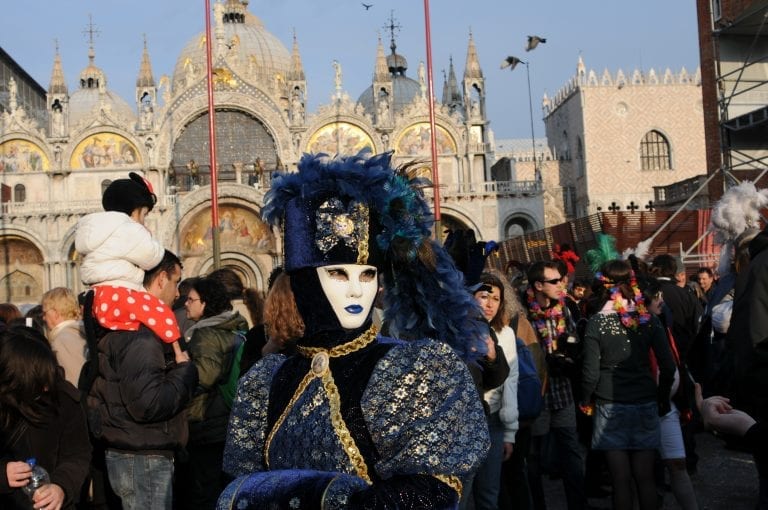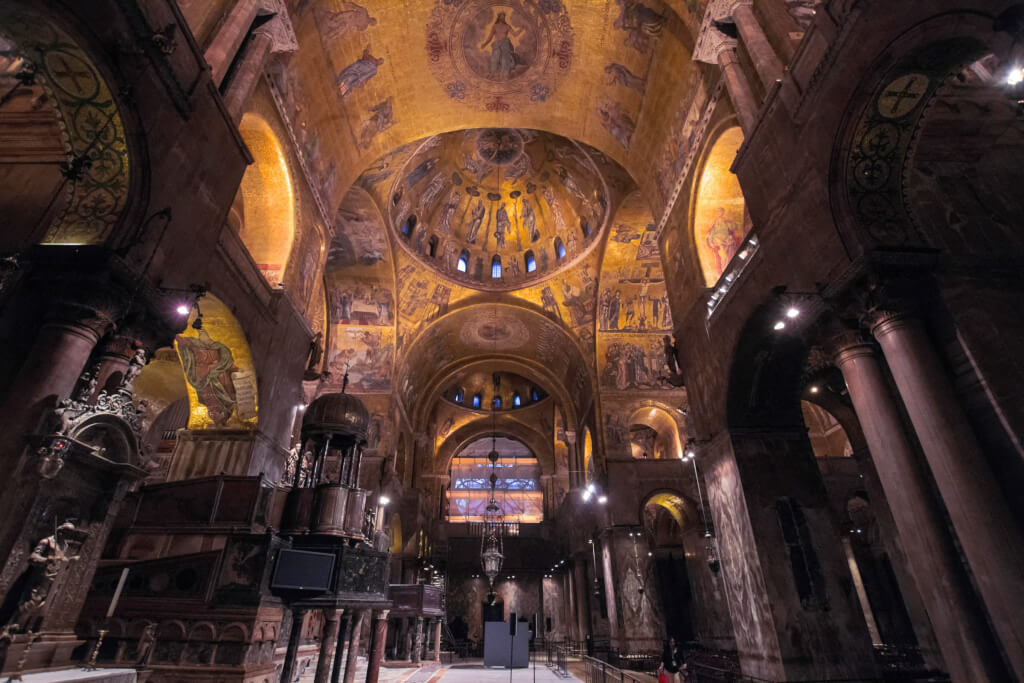
St. Mark’s Basilica: Kidnapping, Treasures, & Other Secrets
January 22, 2025
St. Mark’s Basilica is one of the most-visited sights in Venice and a must-see on any traveler’s Italy itinerary! But with a history that stretches all the way back to the 9th century A.D., it’s also a church with a lot of interesting stories and legends behind it. Here are ten of the most fascinating facts about St. Mark’s Basilica.
Table of Contents
ToggleThe basilica began with a swashbuckling tale of kidnapping
The first St. Mark’s Basilica was built on this spot in the 9th century to house very sacred relics—relics that had been stolen! In 828, merchants from Venice stole the body of St. Mark the Evangelist, one of the four Apostles, from Alexandria, Egypt. According to the legend, they snuck them past the (Muslim) guards by hiding them under layers of pork in barrels.
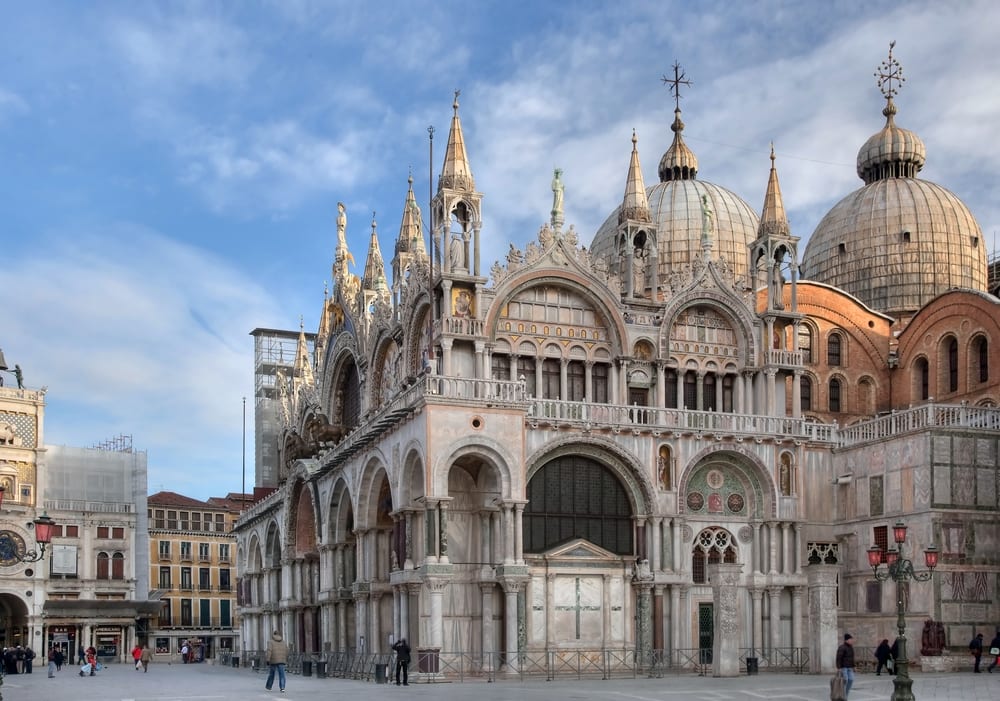
St. Mark’s Basilica’s incredible façade.
While at sea, a storm almost drowned the graverobbers and their precious cargo, it’s said that St. Mark himself appeared to the captain and told him to lower the sails. The ship was saved, and the merchants said they owed their safety to the miracle.
The entire story is pictured on the 13th-century mosaic above the left door as you enter the basilica.
There is enough mosaic to cover 1.5 American football fields
There are more than 85,000 square feet (or 8,000 square meters) of mosaic in St. Mark’s Basilica… or enough mosaic to cover over 1.5 American football fields! The mosaics were done over 8 centuries, mostly in gold, and the result is astonishing. Enter the basilica at different times of day to see how the light makes the colors, and scenes, look different.
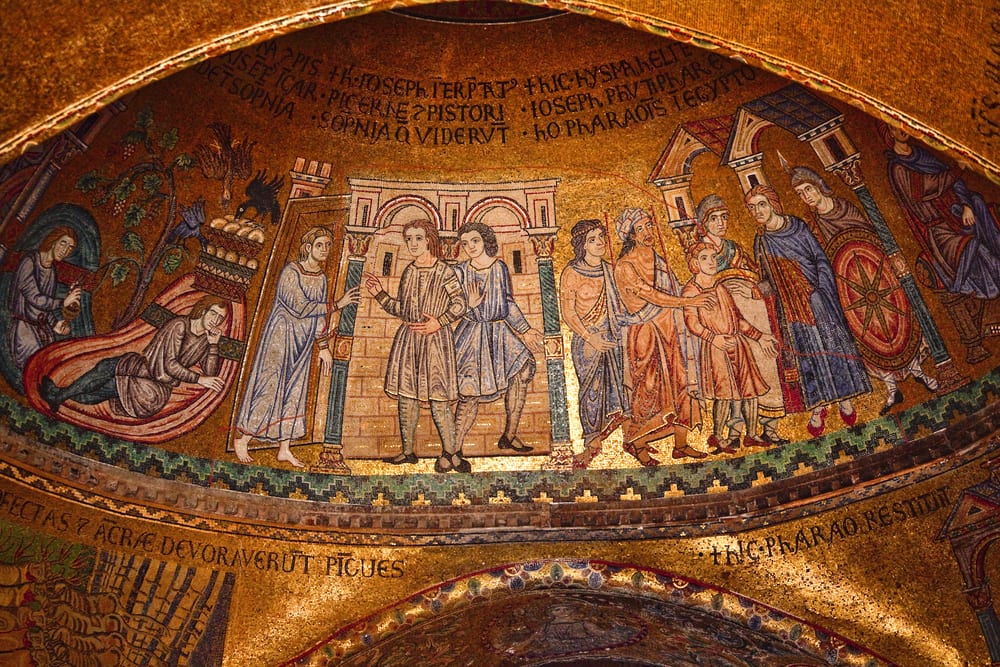
Just one of the dozens of mosaics in St. Mark’s Basilica…
There are more than 500 columns
Just another example of the sheer size, and amount of amazing stuff, in St. Mark’s Basilica is the number of columns. There are more than 500 columns and capitals in the basilica, and most are Byzantine, dating between the 6th and 11th centuries. Some classical, 3rd-century capitals are mixed in, too.

Impressive columns inside of St. Mark’s Basilica.
A lot of the basilica’s treasures came from the Crusades & from Constantinople
The Fourth Crusade, in particular, gave St. Mark’s Basilica a windfall. After all, this was the Crusade that ended, in 1204, with the conquest of Constantinople (modern-day Istanbul).
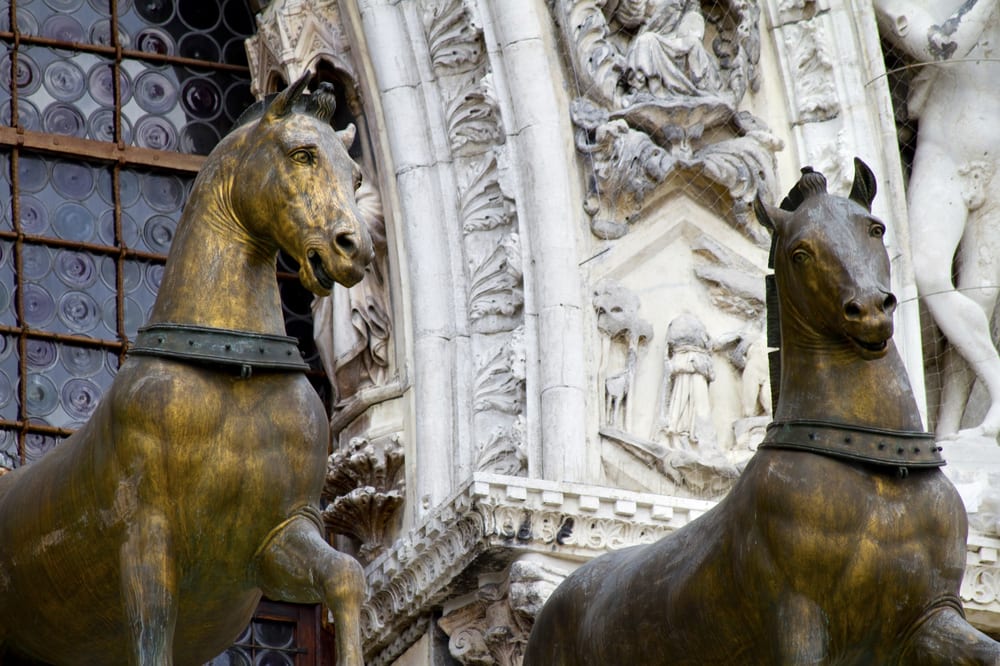
The bronze horses of St. Mark’s Basilica, originally from Constantinople.
The result? A lot of treasure was shipped to Venice, and installed in St. Mark’s Basilica — including the four bronze horses, icon of the Madonna Nicopeia, enamels of the Golden Altar-piece, relics, crosses, chalices, and patens!
The Pala d’Oro puts the Crown Jewels to shame
Forget the glittering gems at the Tower of London: the Royal Family has nothing on St. Mark’s Basilica! The Pala d’Oro, a Byzantine altar screen of gold, is studded with hundreds of gems – literally. They include 1,300 pearls, 300 emeralds, 300 sapphires, 400 garnets, 100 amethysts, plus rubies and topazes.
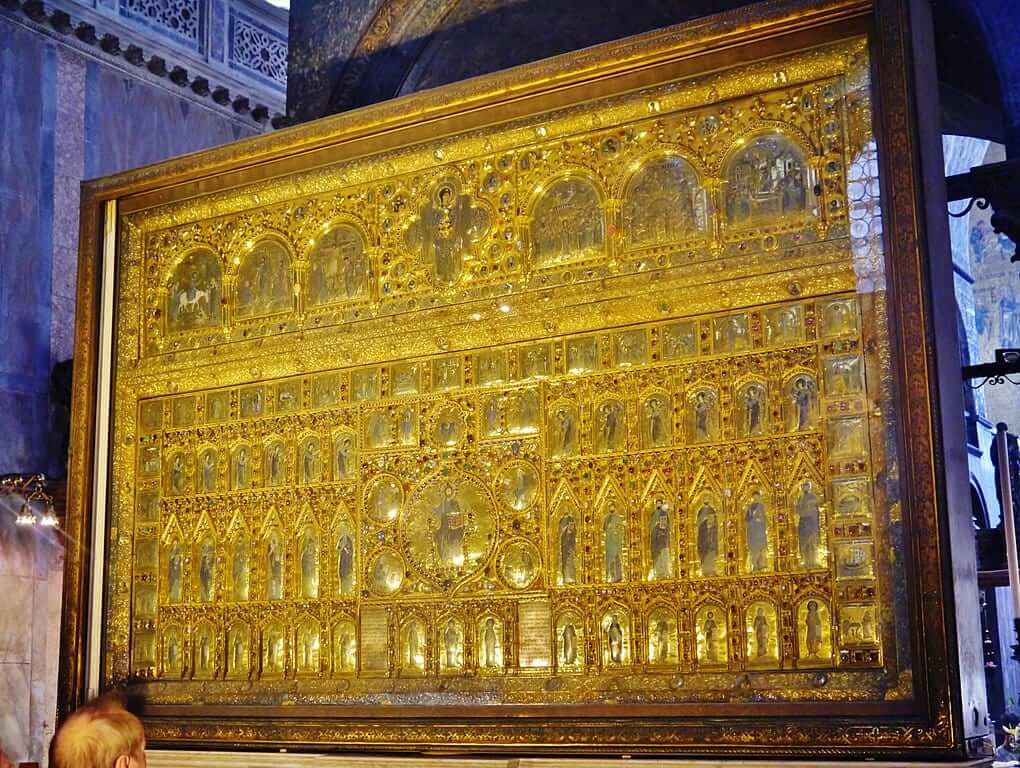
The Pala d’Oro, a Byzantine altar screen of gold.
That bell tower? It collapsed once…
The 323-foot (98.6-meter) campanile of St. Mark’s dates back to the 9th century… but it had to be rebuilt in 1903. The reason? It collapsed! It had been reworked in the 16th century, and apparently not that well.
It collapsed on July 14, 1902. (To be fair, it had survived several earthquakes before that). Although it buried the Basilica’s balcony in rubble, fortunately, the church itself was saved. But the incident was embarrassing enough.
From 1903 to 1912, the bell tower was rebuilt exactly as it had been… except with better, safer techniques.
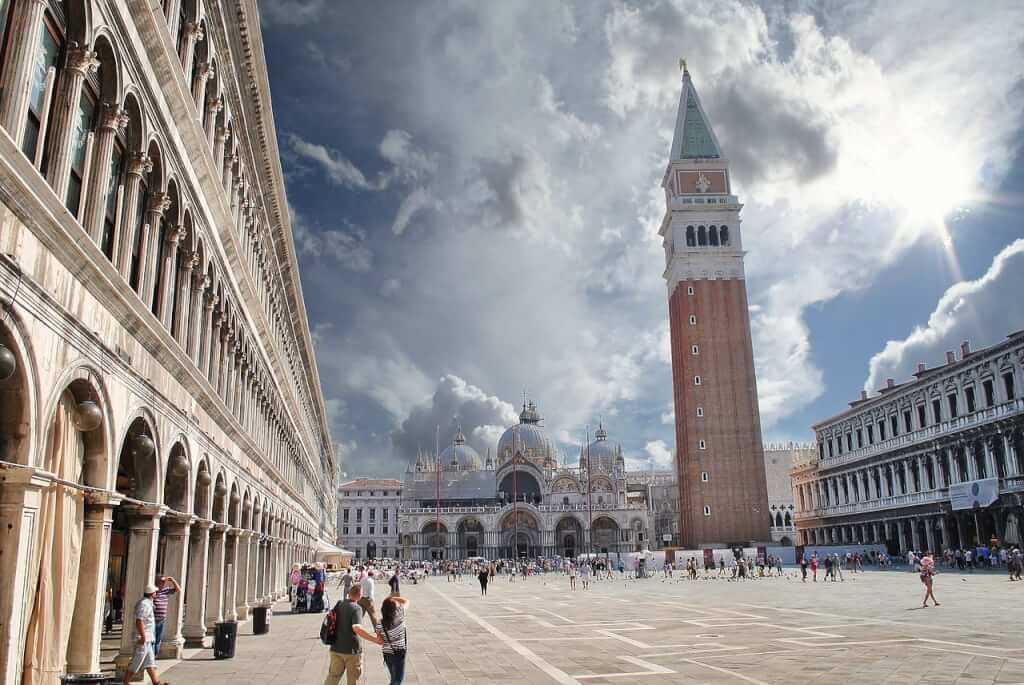
The belltower of St. Mark’s Basilica towers high above the square
The golden mosaics inside St. Mark’s Basilica are made with REAL gold
Venice was in the past a very wealthy city of merchants: what the Republic lacked in military strength or in land domination, they had in riches. The basilica’s mosaics are not just a way to please God and St. Mark or to communicate complex religious concepts, they were also a way to show the wealth of the city to the important guests, like kings or ambassadors from other coutries.
The golden pieces are actually made of gold: each one has a thin gold leaf ‘sandwiched’ between two layers of clear glass. With such a display of precious material, the Venetians could show at the same time their grand devotion but also their political ‘weight’: an extremely important thing for such a small country.
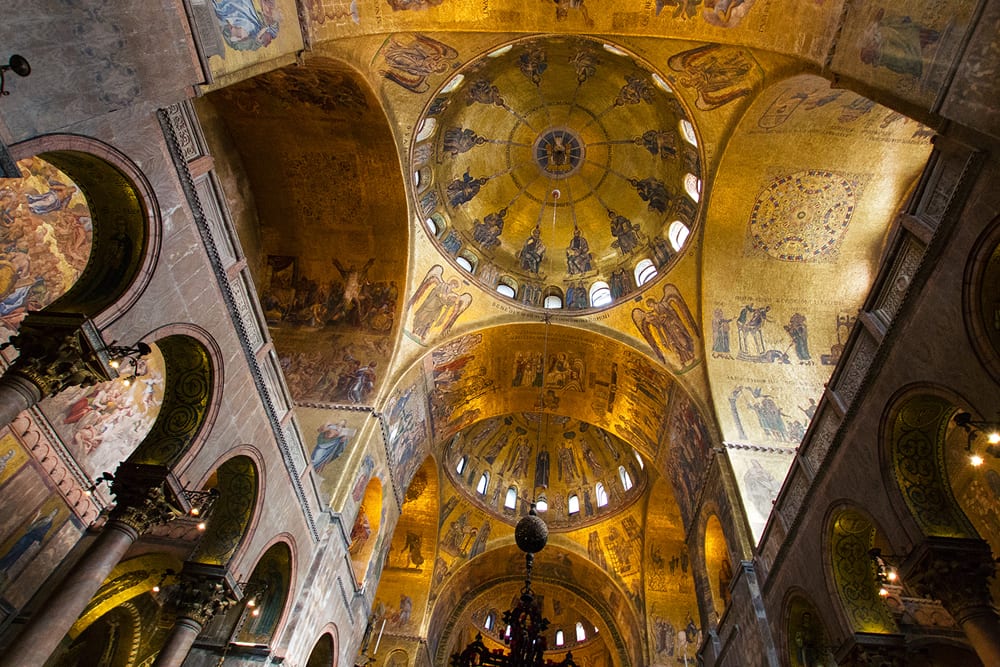
The big outer domes above the basilica are actually fake
In Venice it’s impossible to build huge structures: the terrain is frail, so you have to carefully stick to small, light and flexible buildings. But the Venetians had to find a way to astonish their guests: so they optimized some very clever tricks to cheat the eye and give everyone the impression that the buildings are huge and imposing.
In St. Mark’s Basilica there is a great example of this: the five big domes that give the building its distinctive shape are just a superstructure made of wood cover with a thin layer of lead. They are actually completely empty: the brick built domes with the mosaics that you see inside the church are much lower.
We can arguably say that the only role of those big empty domes is to make the building look much bigger than it really is: this way the ships approaching the city could recognize its shape from afar, and be even more astonished by the legendary city rising from the waters.
In 2019, an “acqua alta” completely flooded the church
In the Venetian Lagoon there are tides: sometimes these tides go higher than normal and as a result some parts of the city get flooded. The St. Mark’s square is the lowest part of the city, so it’s pretty common to see its floor partially or totally submerged in water.
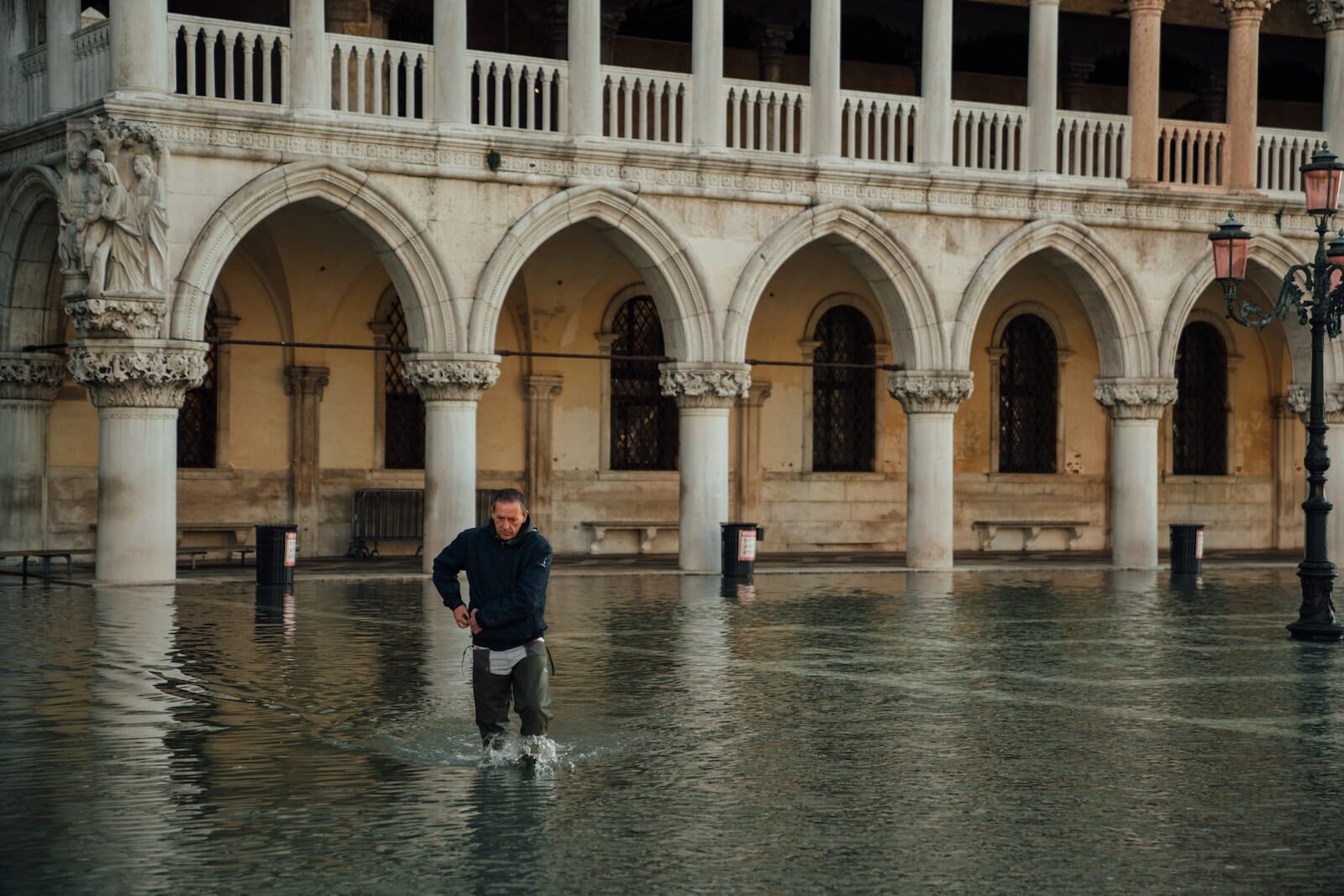
Flooding in St. Mark’s Square. Photo credit: Egor Gordeev
But in November 12, 2019, things went completely out of control. The tide rose so much that it reached the second-highest level ever recorded in the history of the city. The custodians of the church were unprepared for this event; water not only flooded the antechamber of the basilica, which is at the same level of the square, but also the church itself, which is much higher.
The damage was substantial and the building is still recovering. This tragic event gave a big push to the completion of the MOSE project, a system of mobile barriers meant to protect the Lagoon from the most dangerous tides. The barriers were tested a couple of times in 2020 and apparently they worked well. We all hope they will be able to protect the basilica from future floods.
St. Mark’s Basilica is not the oldest, nor the largest church in Venice
St. Mark’s Basilica was built starting from the 9th century. However, the history of Venice starts way before that moment, in the 5th-6th centuries. So there are Venetian churches around the city that predate the most important monument. According to the historians, the oldest holy building of the city could be the church of San Giacometto, which is very close to the Rialto Bridge.
The Rialto area was, in fact, the first spot that was colonized when the islands started to be populated. Indeed, because of this, the city of Venice was actually called “Rialto” for the first centuries of its existence.
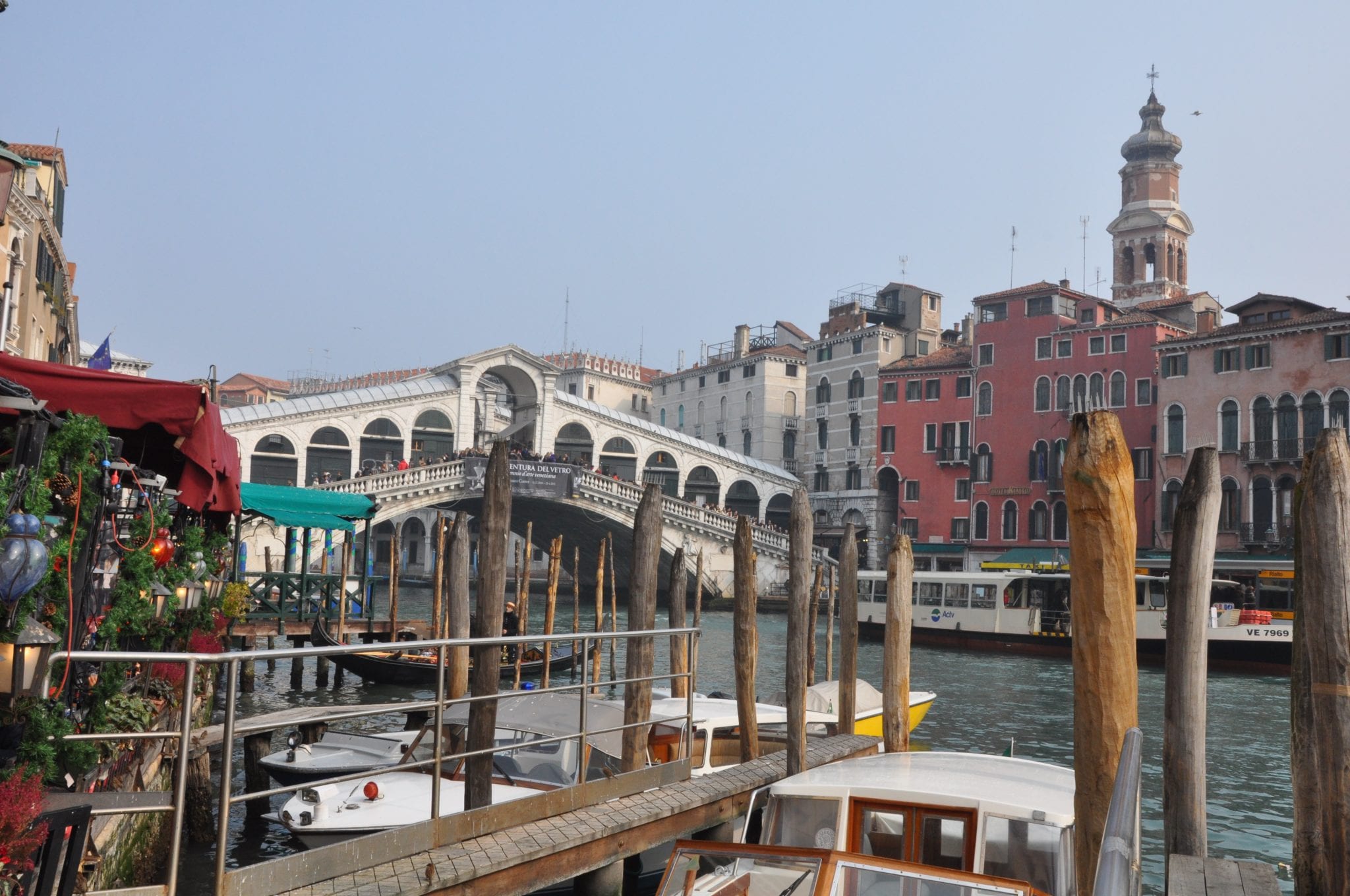
Despite its enormous size, at least in proportion with the other buildings of the city, St. Mark’s Basilica is also not the biggest church – that title goes to the church of Santi Giovanni e Paolo, home to the very powerful Dominican monastic order. Their monastery was so big that when Napoleon conquered Venice he chose that building to become the first big public hospital of the city (the hospital is there still today)! You can learn more about San Giacometto and Santi Giovanni e Paolo if you take our Venice in a Day tour, which both feature these very important churches.
Special thanks goes to our Walks of Italy guide Mosè Viero for sharing these additional interesting facts about St. Mark’s Basilica.
Update notice: This post was updated on January 22, 2025.
If you want to learn more, check out our Legendary Venice Tour for a fascinating guided visit of St. Mark’s as well as the Doge’s Palace. And for a really VIP visit, access St. Mark’s Basilica after hours, when it’s closed to the public!
by Elena L.
View more by Elena ›Book a Tour

Pristine Sistine - The Chapel at its Best
€89
1794 reviews

Premium Colosseum Tour with Roman Forum Palatine Hill
€56
850 reviews

Pasta-Making Class: Cook, Dine Drink Wine with a Local Chef
€64
121 reviews

Crypts, Bones Catacombs: Underground Tour of Rome
€69
401 reviews

VIP Doge's Palace Secret Passages Tour
€79
18 reviews

Legendary Venice: St. Mark's Basilica, Terrace Doge's Palace
€69
286 reviews









